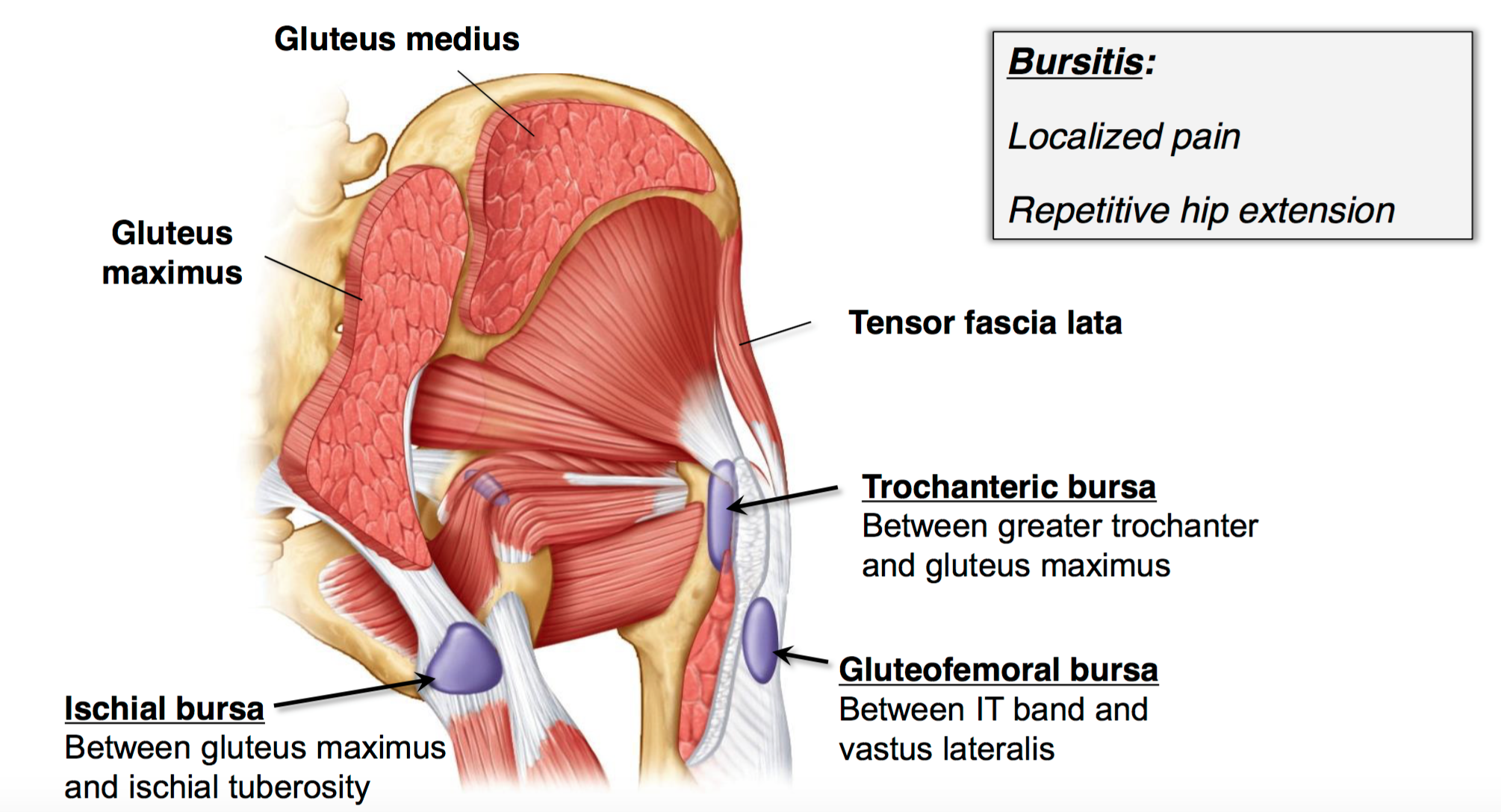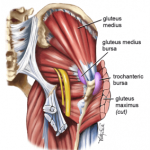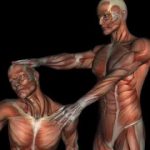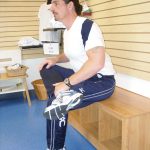Pain in the butt/Gluteal pain is common in long distance runners as well as in the non-running population. When a patient presents complaining of pain in their butt/Gluteal pain it is extremely important to do a thorough exam and rule out any and all other possibilities. There are usually 6 possibilities or differential diagnosis when examining someone with pain in their Gluteal region.
- Sciatica
- Gluteus Medius Syndrome
- Piriformis Syndrome
- Ischial Bursitis
- Trochanteric Bursitis
- High Hamstring Tear/Tendonopathy (HHT)
There are tried and true orthopedic tests that have been around forever that can be used to differentiate these conditions. I refer to them as provocative testing because my intent is to stress the injured area thereby provoking the symptoms, or not. This can eliminate a condition as a “suspect” or if the symptoms are provoked the testing can narrow down the diagnosis.
A woman presented to the clinic complaining of right sided butt pain that began years ago. She had been to orthopedic surgeons that had done both back and hip MRI’s. When the MRI did not show anything they suggested she try something more esoteric like acupuncture. She did…for a year…with only very mild relief. At this point and after 3 years of pain she still did not have a diagnosis! After listening to her history I showed her an anatomically correct picture of the involved area and told her how I would go about testing each structure to either eliminate it as a suspect or if the testing was positive, do more testing of that structure to confirm a diagnosis.
I first eliminated sciatica based on her lack of symptoms radiating down her leg. In order to have sciatica you must have pain radiating past your knee into your calf and/or foot. Since the description of her symptoms did not fit sciatica and the orthopedic and provocative testing were negative for sciatica I eliminated it as a suspect. Next I stressed her Piriformis muscle. In order to be Piriformis Syndrome one must have symptoms and pain that radiate past the knee. Once again her description of her symptoms did not fit this diagnosis and my inability to provoke it through orthopedic and provocative testing confirmed that it was probably not Piriformis Syndrome. At this point I suspected she had Gluteus Medius Syndrome but to be thorough I continued with my testing and eliminated both Ischial Bursitis and Trochanteric Bursitis as well as a high hamstring tear/tendonopathy. This was simple as bursa will be extremely painful if pressure is applied to them and neither of her bursa reacted to extreme pressure. Hamstring tears, tendonitis or tendonosis will also hurt if pressure is applied but in addition I can provoke the hamstring by manually muscle testing it. This is done with the patient lying on their stomach. I then have them resist my downward pressure as they contract their hamstring (picture the exercise for your hamstrings in the gym…the one that you are lying on your stomach and curling the weight towards your butt). Since this test also did not cause pain and her hamstring was 100% strong I eliminated all hamstring diagnosis at that time. This only left Gluteus Medius Syndrome, one of the most common conditions that I treat and fix daily that afflicts the long distance running community.

Provocative test for sciatica and piriformis syndrome
Now that she had a working diagnosis I offered her treatment options. She elected to try the most conservative approach that consisted of ultrasound, Myofascial release/ART and electrical stimulation directed at the Gluteus Medius trigger points. She was also taught a very specific set of stretches to do and provided with exactly how long to hold each stretch and told exactly how frequently to perform them. Next I taught her how to properly use a foam roller with specific instructions on her form, duration and pressure used while doing the foam roller exercises.
She was thrilled that someone not only had finally diagnosed her condition but that she was being taught exactly how to help fix the condition at home. I explained how important it was that she follows our protocol to the letter and cease and desist from doing anything other than what I had shown her. Unfortunately it is normal for someone to leave here and forget what we have shown them! For this reason we send them email pictures and videos of the stretches and foam roller routine they were shown. Not only does this help her be compliant but it ensures that she will perform the exercises as instructed.
I often am told by patients that when they saw a specialist the doctor never even touched them. Instead they reviewed their MRI and/or X-ray and declared nothing was wrong. Obviously something was wrong or the patient would not be in your office Doc! A doctor must be a detective and when presented with a patients symptoms they must consider the “usual suspects”. A X-ray or MRI may be used to help eliminate or confirm your suspicions but there is nothing like good old fashioned detective work. When X-rays and MRI’s are negative the doctor must use manual orthopedic/provocative testing and take a thorough history in order to get to the bottom of the persons condition. If you can figure out WHAT anatomical structure is causing the pain then you might be able to plug in the correct treatment regimen and help the person rid themselves of a painful and unwanted condition. Doctor means “teacher”. It is your job to teach a patient what is wrong and then teach them how to get rid of it.
Butt pain/Gluteal Pain is one of the more common conditions to afflict people. It is often misdiagnosed as Sciatica or Piriformis Syndrome in error when in fact it is the Gluteus Medius muscle. Most Butt pain/Gluteal pain will respond to conservative treatment consisting of manual therapy directed at the Gluteus Medius muscle combined with a strict but simple home program consisting of specific stretches and foam roller routine. The stretching but be performed frequently and for short duration while the foam roller must be done infrequently and for short duration without too much pressure in order to be effective.
For more information on Buttpain/Gluteal pain see our webpage or email info@sdri.net
If you are suffering from Butt pain/Gluteal pain and want to finally get rid of it email us at info@sdri.net or call 858-268-8525 to schedule an appointment.
The medical information on this site is provided as an information resource only, and is not to be used or relied on for any diagnostic or treatment purposes. This information is not intended to be patient education, does not create any patient-physician relationship, and should not be used as a substitute for professional diagnosis and treatment.





Leave A Comment